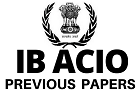sponsored links
In this model, similar types of communication functions are grouped into Layers. There are 7 layers in this Model. Those are,
- Physical Layer
- Data link Layer
- Network Layer
- Transport Layer
- Session Layer
- Presentation Layer
- Application Layer
Each layer helps it's above layer to establish an error free communication, in other words, each layer depends on its below layer to establish an error free communication.
How to remember these names????
Here the order is very important. If anybody asks you about these layers, you should start with Physical and end with Application Layer. You should not jumble these names according to your convenience. So you should remember these names with an order. Well, there are several techniques are there to remember these type of names. One of those technique is, making a funny name or sentence with the STARTING letters. Just, write the starting letters of these layers.
P D N T S P A
Now make a funny sentence, here are some examples
- Please Do Not Touch Steve's Pet Alligator

Or
- Please Do Not Throw Sausage Pizza Away

Now I bet you never going to forget these names and order again :)
Ok, now lets have a look at the Functionalities of these Layers...
- Physical Layer : This is the First or Lowest layer of the OSI model. It takes care about the Physical Connections.
- Data Link Layer : This layer Encodes the data packets and provides error free node to node transmission. It is divided into two sub layers. Those are
- Media Access Control Layer (MAC Sublayer in short)
- It helps the computer to get the access of data transmission
- Logical Link Control Layer (LLC Sublayer in short)
- It controls the order, flow and errors of the frames (Frame synchronization)
- Network Layer : This layer helps in Switching and Routing (connecting and transmitting), and also creates virtual circuits ( Imaginary paths for transmission)
- Transport Layer : This layer helps in providing Transparent data transmission. Its also checks whether the data completely transmitted or not.
- Session Layer : This layer is responsible for the Transmission Sessions. I mean Starting, Maintaining and Terminating the Communication.
- Presentation Layer : This layer provides the data Independence ( simply you can remember that this layer is responsible for the data Presentation :) I mean, how you are presenting data (without any leakage)
- Application Layer : This is the topmost layer, this layer directly interacts with the end user. This layer is responsible for checking whether the claimed user is genuine or not.
Still having problems with these functions??? Have a look at the following diagram. It will be easier for you to understand :)
Very good. Now you know about the OSI model and It's Layers :) You know that it was developed by ISO.
Hey, you know one secret? ISO dint invent any new model. It just COPIED some old model and modified it.. Thats all.
Once there was a model called TCP/IP model (Transport Control Protocol / Internet Protocol) with this name itself, you can define its functionality :) It has lil complicated structure with only 4 Layers. Those are
- Network Interface Layer
- Internet Layer
- Transport Layer
- Application Layer
ISO Just elaborated this model and divided some of these layers into EXTRA LAYERS and developed OSI model. have a look at the following Diagram, so that you can understand the difference :)
Thats all for now friends. Happy reading...










 English Vocabulary from
English Vocabulary from













It was realy helpful.....Thanks for ur help...Pls if possible try to provide some information that how IBPS is going to take onlione clerk exam...Will they provide us paper for rough....Pls rply....
ReplyDeleteYep, they will provide you with the white paper for the rough work... Do check the IBPS Clerks 2012 study materials link above for complete details.
Deletethanks for this hepl & pls add some theoritical part of excle & power point.i think its important for bank clerck.
ReplyDeleteSure Monika. We'll add theoretical part soon. Thank you so much for the suggestion.
DeleteGood Day
simply super sir...
ReplyDeletemam plz update other network topics too that are important and are difficult to understand ...:(..like ip protocols
ReplyDeletethanks for helping me again...
ReplyDeletemam pls upload questions fr technical aspirants
ReplyDeleteHi,
ReplyDeleteThanks for this valuable information. My question here is that if this technical material provided by you is enough to cover professional knowledge section of the exam ???
If not then please provide alternatives also to cover everything to do well in professional section as I have no idea what this section all about.
Thanks and Regards,
Eshant Garg
We're leaving no stone unturned to cover all the topics Eshant... We wil try to give our best to make you clear the exam .. All the best
Deletethenk you very much,you are doing a great job!!!!!!!!!
ReplyDeleteVery helpfull form me,I am working as a software engineer ,
ReplyDeleteVVVvvvvvvvvvvvvvvvvvvvvvvvvvvvvvvvvvvvvvvvvvvvvvvvvvvvvvvvvvvvvvvvvvvvvvvvvvvvvery good .are u doing a very good job,could u pls any one send me english materils my mail mcarathnam2011@gmail.com
ReplyDeleteSimply Superb..
ReplyDeletethank u for ur valuable information regarding the competitive exams.
ReplyDeletedear mam
ReplyDeleteu r doing great work i have thought a paragraph to remember the layers of osi model-"apne pyare sachin tendulkar ne daru pi" here apne for application layer,p yare for presentation layer and so on.
i think it would be better way for remember.
PDNTSPA- you can remember these 7 layers as "Please Do Not Take Sales Person Advice"
ReplyDeletenice one Aravind! easy to remb
Deletence
ReplyDeletewill u can provide a full reference guide for IT material mam
Thank you very much for the hard work you all have put in for providing the study materials. Keep publishing more.
ReplyDeletehow to download this file plz reply
ReplyDeleteReally it is great.
ReplyDeleteI wish I had these study materials while I was doing my BE course...
ReplyDeletesame here
Deleteawsme
ReplyDeleteexcellent sir
ReplyDeleteIts very useful to refresh the things which i have learned...
ReplyDeletethank you...
is this much sufficient it officer exam?
ReplyDeleteis this much sufficient for it officer
ReplyDeleteHi, Really its very useful to recollect all the important topics.Thank You very much.Keep up the good work.
ReplyDeleteP D N T S P A means please do not touch salman pyari ashwrya......
ReplyDeleteSir in TCP stands for transmission control protocol not transport control protocol
ReplyDeletethx gr8ambitionz.
ReplyDeleteu guys r really doing great work